Copywriting for ecommerce sites isn’t as hard as it might first appear. In fact, the most common way to botch ecommerce copywriting is to overthink it. A lot of sites would sell more if they just talked to their site visitors as if those visitors were right in front of them. You know…. the way a salesperson would.
But here’s the secret: Salespeople have scripts. They’ll vary the script a bit, they’ll use a different script for different situations and different types of buyers, but they have templates – formulas, if you will. They use those formulas every time they talk to a prospect.
We’d like to give you a few ecommerce copywriting formulas like that. This post is for anyone who:
- is new to ecommerce copywriting
- has a case of writer’s block
- just needs some fresh ideas
- wants inspiration for a few copy tests.
Why Ecommerce Copywriting Formulas Work
Have you ever tried to sell stuff to people in person, or on the phone? It’s educational, to say the least. Even one hour of trying it will show you why ecommerce copywriting formulas are the way to go.
When you first dive into your new role as salesperson, you’ll naturally try out a couple of approaches. Most of them will fail, but after about 20-30 tries, you’ll probably hit upon an introduction and an initial exchange that some people respond to. You will have found your first sales formula.
In the next 20-30 conversations, you’ll refine that formula. You’ll start to see how different types of people respond to different approaches. You’ll develop a few formulas for different situations and people. You’ll have learned people’s most common objections, and where the friction is in your pitch.
About 20-30 conversations later, you’ll have refined your formulas and your delivery. You may even have made one or two sales. You’ll start to refine the later parts of the sale, modifying that for different types of customers.
You’ll have developed a sales formula.
This is the core reason ecommerce copywriting formulas work. Because as John Caples taught us a jillion years ago, certain copywriting approaches work. They close dramatically more sales – 10x or better – than other approaches. And those same formulas can be applied (if they are applied intelligently) to sell anything from asset management to zucchini.
So instead of re-inventing the wheel every time you sit down, get smart: Use copywriting formulas that work no matter what ecommerce platform you’re on. These are the same formulas that have been selling trillions of dollars of stuff for decades. They’re free for you to use.
5 Classic Ecommerce Copywriting Formulas To Use Anywhere
Whether you’re writing a sales page or a PPC text ad, the basic structure outlined in these time-tested ecommerce copywriting formulas can help.
1. AIDA (Attention, Interest, Desire, Action).
AIDA is the mother of all copywriting formulas. It stands for…
Attention – Capture your readers’ attention.
Interest – Pique their interest with something they identify with, want, or fear.
Desire – Make them want what you’re offering.
Action – Get them to take the next step.
There are thousands of ways to craft copy around this formula. It’s so flexible, you might not even need to use words. Butcher Box’s hero shot of that barbequed meat makes us desire their product more than a mere word ever could.

Butcher Box is using AIDA in several clever ways here. The picture grabs our attention, but so does their free offer. They’ve heightened the interest (and are speaking to what is probably their target audience, barbeque fans) with an offer targeted for the sort of people who would value quality meats.
The desire is inherent. That picture could make a vegan hungry. And then there’s the three different action devices. Can you see them? The first is the red “Claim offer” button. Next is the added urgency of “Limited Time Offer.” The third is the phone number in the upper right-hand corner.
They get all this done in 21 words. Take that to heart – the best ecommerce copywriting is spare.
“I subscribe to the copywriting school of thought where every single word is absolutely worth stewing over and A/B testing because one single word can change everything.”
We agree. For example… one thing we might want to test here is adding “You” to the call to action: “Claim Your Offer.”
2. AIDCA (Attention, Interest, Desire, Conviction, Action).
This copywriting formula adds one more element: Conviction. That can be a smart move – trust is the secret sauce of sales.
Here’s how copywriter Annie Maguire describes AIDCA structure:
- Attention: Hook the reader with a bold statement or question.
- Interest: Engage the reader with unusual, counter-intuitive, or fresh information; describe the problem the reader wants to solve.
- Desire: Stoke the reader’s emotions. Highlight the benefits of your product and answer the question of “what’s in it for me?”
- Conviction: Prove your product is for them with customer testimonials, case studies, rating/reviews, money-back guarantee, and anything else you’ve got.
- Action: Tell the reader what to do next. Not later: Right now.
This is another formula that can be used almost anywhere. Here’s how a product page might implement it:
- Attention: Use a headline that stops shoppers in their tracks.
- Interest: Include a specific, surprising fact about the product that makes people want to know more.
- Desire: Product shots incite desire. So do carefully chosen testimonials. Or juicy benefits and geeked-out features.
- Conviction: Having plenty of customer testimonials helps shoppers feel confident in their purchase. An easy, clearly-stated return policy helps, too. And if you’ve got any trust icons, influencer endorsements, or other ways to build trust, use them.
- Action: Make that order button big and bright and oh-so-clickable. Follow it up with a mobile-friendly order process so smooth they’ll never think twice about it.
3. AICPBSAWN (Attention, Interest, Credibility, Proof, Benefits, Scarcity, Action, Warn, Now).
Is this the battle of the acronyms? Maybe. If it is, AICPBSAWN wins.
Here’s what that cup of alphabet soup stands for:
Attention – Rise above the noise by describing the biggest benefit your product solves, or your Unique Selling Proposition. Get their attention.
Interest – Lure them in further.
Credibility – Use testimonials or endorsements to show you’re the real deal.
Proof – Prove what you say is true.
Benefits – List all the benefits of your product. Bullet points are AOK. Benefits, by the way, are what something does. Features are what something is. An umbrella’s feature is water-repellent cloth. The benefit is you staying dry.
Scarcity – Motivate them to act by explaining how this offer won’t last forever.
Action – Make it crystal clear what you want them to do next.
Warn – Sprinkle on some fear. Show them what could happen if they don’t buy right now.
Now – Push them to act right now. Not when they get home. Not tomorrow. Now.
4. PAS (Problem, Agitation, Solution).
Of all the ecommerce copywriting formulas we’ve covered, PAS is the one you’ve probably seen the most. Blog posts use it, sales pages use it – even photo captions can use it. And despite its deceptive simplicity, it is extremely effective.
- Problem – Describe the problem your target audience has.
- Agitation – Describe what it’s like to experience this problem in a way that makes your target audience feel the discomfort even more, so they more urgently want to solve the problem.
- Solution – Offer your solution.

See how Tile made this copywriting formula even better? They added a benefit, too. Who doesn’t want to get lost in the music?
PAS is very similar to another copywriting formula called “Before – After – Bridge.” In BAB, the “before” is when you describe your target audience’s life before they found your product (aka, you describe their problem). Then you describe their life “after” they’ve found your product (aka, the solution). Then you introduce your product as the “bridge” that got them to their new life.
5. ACCA (awareness, comprehension, conviction, action).
Got a unique or hard-to-understand product? This may be the formula for you. ACCA…
- Creates awareness about the problem your product solves.
- Educates your audience so their comprehension of the problem rises.
- Gives them the conviction to do something about this problem.
- Prompts them to take action.
Skinceuticals uses ACCA to sell a product that protects against atmospheric skin aging… something that otherwise might not have been on the top of your list of things to worry about.

Ecommerce Copywriting Formulas for Headlines
Headlines make or break product sales. That’s why they’re usually the first thing that gets tested. We encourage you to test your headlines rigorously, but testing works best if you start with a couple of strong headlines to begin with. Any one of these headline formulas is a good start.
1. Are You Still [Action Your Product Helps Prevent and Your Audience Wants to Stop]?
Examples:
- Are You Still Suffering From Insomnia?
- Are You Still Not Saving for Retirement?
- Are You Still Ironing Your Shirts?
2. [Your Product’s Best Benefit].
Examples:
- Never See Another Ant in Your House Again.
- Retire Sooner Than You Thought Was Possible.
- No More Split Ends.

3. A Short Testimonial.
Examples:
- “I Didn’t Think It Would Work for Me. But It Did.”
- “I Wish I Had This 10 Years Ago.”
- “My Search Is Over.”
4. [Your Target Audience]! Are You Still [Undesirable Outcome]?
Examples:
- Surfers! Is Your Leash Still Getting Tangled?
- Swimmers! Is Chlorine Still Bothering You?
- Runners! Have You Lost Enough Toenails?
Note the variation on the formula in the third choice here. We’d be tempted to test this with just the question, too: “Have You Lost Enough Toenails?”
5. The [Product] Over [Social Proof] Use To [Desired Result].
Examples:
- The Hearing Aid Over 100,000 Seniors Use To Hear Whispers
- The Diet Plan 1,000,000 Americans Use To Keep Weight Off
- The Mattress Elite Athletes Swear By
Again, note the variation in the third bullet point. Never hesitate to modify these formulas. Adding something new to something familiar is a meta formula that works for copywriting and for art.
6. Get [Desired Result] In [Surprisingly Short Time Frame].
Examples:
- Lose 10 Lbs in 10 Days
- Learn English in One Week
- Earn $20,000 in One Month
7. How [One Of Your Customers] Got [Desired Result] In [Surprisingly Short Time Frame].
Examples:
- How Marcy Jones Lost 30 Pounds in 30 Days
- How SAAS Firm Boomlet Got 5,000 Leads in One Week
8. X Lies About [Your Product Category].
Alternate formula: X Myths About [Your Product Category].
Examples:
- 10 Lies About Probiotics
- The Biggest Lie About Supplements
- The 3 Worst Lies Sound Technicians Tell Their Clients
9. How To [Primary Benefit Of Your Product].
Alternate: How to [Primary Benefit Of Your Product] Without [Undesired Outcome].
Examples:
- How to Get More Website Traffic
- How to Get Optimal Nutrition
- How to Get More Website Traffic Without Publishing More Content
10. Finally, A [Product Type] That Actually Works.
Examples:
- Finally, An Air Purifier That Actually Works
- Finally, A Dating Service You Won’t Hate
- Finally Enjoy Coffee Without Teeth Stains
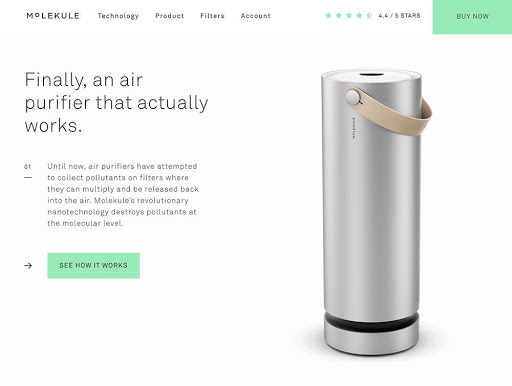
Ecommerce Copywriting Formulas For Product Pages
1. A benefits-driven product page.
Product Name:
Sku.
Availability
Price
Benefit #1. How the features deliver benefit #1.
Benefit #2. How the features deliver benefit #2.
Benefit #3. How the features deliver benefit #3.
Who the product is for. Which features will please that audience the most.
How to use the product and the benefits of using the product.
Call to action to start using to product, and what will happen after the customer has used the product for a while.
Any product customizations, add-ons, or complementary products.
Quantity
“Add to cart” button
Here’s an example of a product page that loosely follows this format.
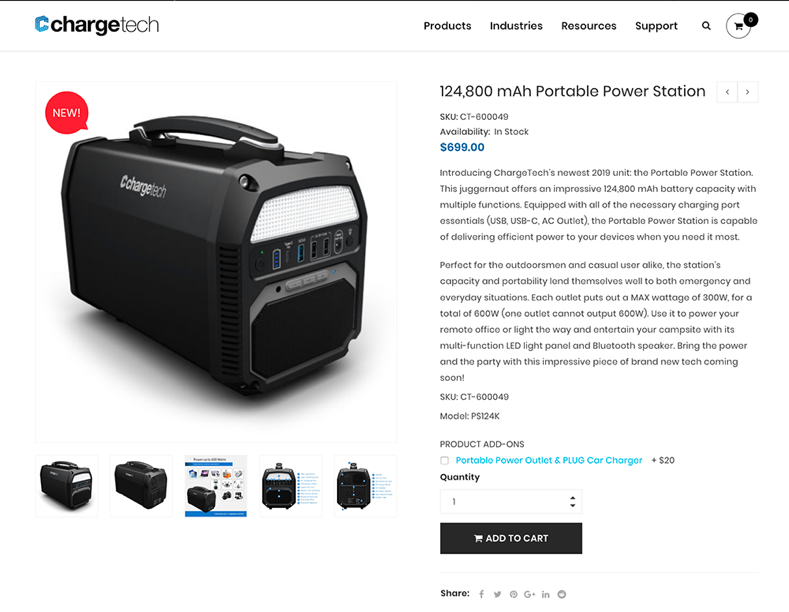
2. The Amazon.
Amazon has arguably developed the grand-daddy of all product pages. Billions (trillions?) of sales can’t be wrong. Here’s their product description formula.
Product Name
Created by
Review rating | Link to reviews | Link to answered questions
Price
Shipping status
Delivery by date if you order within the next X hours
Stock status
- Feature #1 and the benefit it delivers
- Feature #2 and the benefit it delivers
- Feature #3 and the benefit it delivers
- Feature #4 and the benefit it delivers
- Feature #5 and the benefit it delivers
Two product images and one product video
Frequently bought together:
Two other products that are bought together or complementary products
Quantity
Add to Cart
Deliver To
Add to List
Sharing buttons
Here’s what the page looks like:

3. A shorter product description.
Sometimes words just get in the way. If you’d rather have a shorter product description and let the images do the talking, this product description formula from BH Cosmetics might be just the thing.
Product Name
Shade shown in photograph
Price
Payment plan options
Star rating for reviews | Link to read reviews
Get [two specific benefits] with our [Product Name]. [Feature] + “will give you” + [Benefit]. [What the product will do for the customer as a benefit], thanks to [Feature] and [Feature]. [Call to action for the customer] + to get + [another benefit].
Product colors / customizations
Quantity
Call to action: “Add to bag”
Shipping estimate
Sharing buttons
Icons showing additional product features

Ecommerce Copywriting Formulas For Pop-Ups and Exit Banners
1. [Product benefit] + [Free Shipping Offer] + “By Confirming Your Email Address Below”.
Most of the people who come to your site will not place an order. It’s sad, but true. They’ll visit and then leave, never to come back. Unless you get their email address.
Pop-ups (aka “overlays”) are the best way to get someone’s email address. And once you’ve got their email address, you can continue the conversation, even after they’ve left your website.
Here’s how Burt’s Bees uses a free shipping offer in their overlay. This offer appears within the first few seconds after a visitor lands on their site:
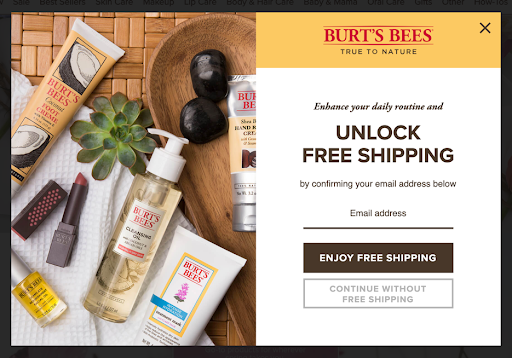
Notice how it says “confirm your address”? That’s important. Use double opt-in to build your email list, and don’t give people your free shipping promo code until they’ve confirmed their email address.
2. Wait! Save [X]% For A Limited Time… Get An Instant [X]% Discount on your order when you use code [CODE] at checkout. Take advantage of this one-time offer now before it’s too late!
This is the formula we used for an exit-intent banner that gave the option to save 10% when the visitor was about to abandon their cart without making a purchase.
We also tested offering a bonus product like a deluxe sample size. The result? A 36% increase in sales.
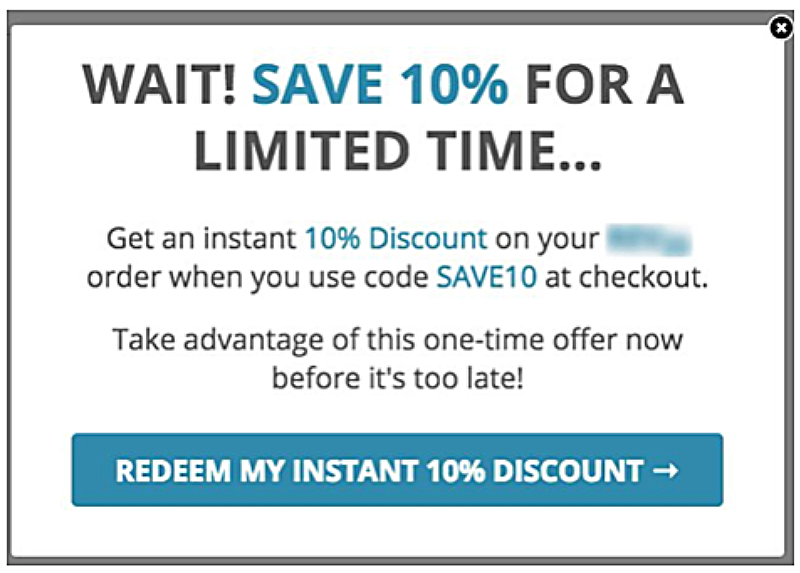
3. Take [X]% Off Your First Order! Join our email list and we’ll apply a [X]% discount to full-price items in your cart. Exclusions apply.
Do you hate pop-ups/overlays and exit-pops? Then this one’s for you. Backcountry is using a modified overlay in the example below. It’s still a little invasive, but less invasive than a full-screen exit pop-up. And honestly, with an offer that tempting… a lot of people may actually want to know about it.
 Notice how Backcountry has also tweaked this offer just a little from the standard “[X]% off”. The discount only applies to full-priced items and there are exclusions. That keeps Backcountry from, um, losing their shirt.
Notice how Backcountry has also tweaked this offer just a little from the standard “[X]% off”. The discount only applies to full-priced items and there are exclusions. That keeps Backcountry from, um, losing their shirt.
5 Ecommerce Copywriting Formulas For PPC Ads
You can modify these PPC ad copywriting formulas and use them in display ads. We also recommend testing your ad copy. Rigorously. If you want to get really crazy, try swapping the elements of the ad copywriting formulas below. For example: Use formula #1’s Title in formula #4. Or vice versa.
1. Title: Keyword
URL: Your Site/Keyword With Dashes
Copy line 1: Benefits.
Copy line 2: More benefits. Call to Action.
2. Title: Your Unique Offer
URL: Your Site/Keyword With Dashes
Copy line 1: Benefits of the offer.
Copy line 2: Benefits of Your Product. Call to Action.
3. Title: Get [Your Product] Here
URL: Your Site/Keyword With Dashes
Copy line 1: Your Unique Offer.
Copy line 2: Benefits of Your Product. Call to Action.
4. Title: For [Your Target Audience] Only
URL: Your Site/[Your Product]-For-[Your Target Audience]
Copy line 1: Benefits of Your Product.
Copy line 2: More Benefits of Your Product. Call to Action.
5. Title: [Scary Statistic/Happy Statistic]
URL: Your Site/Keyword With Dashes
Copy line 1: That Doesn’t Have to Be You.”/ “That Could Be You.”
Copy line 2: Statement About Your Product That Proves You Can Make Your Prospect Achieve The Happy Statistic or Avoid the Scary Statistic. Call to Action.
2 Ecommerce Copywriting Formulas For Emails
You got the first click. And you even got the micro-conversion of getting their email address. So use it. Use it well.
1. A new (or newly updated) product.
New. For [primary benefit].
[How your product is new]. So [key benefit of the new features or the new product].
[Feature #1]. [Feature #2]. And [Feature #3] so [big, 10,000 foot level benefit].
Learn More | Find a Store
Here’s how Apple used a mere 42 words to execute this email copy formula:
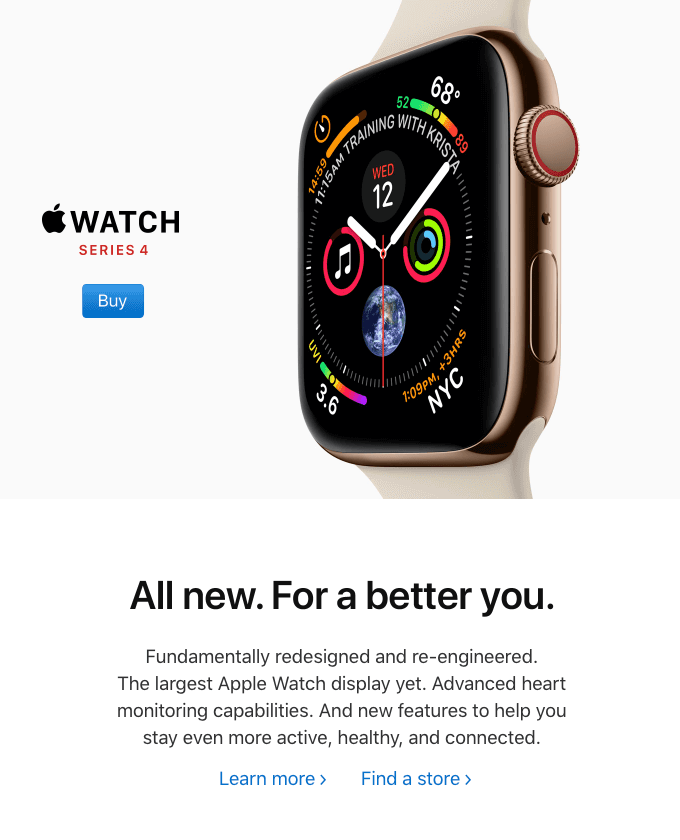
2. A Sale email template.
[Name of your sale]
Save up to [X%]
On [product categories or products that are on sale]
Plus, [The coolest product you have on sale, at its lowest price ever]
Our lowest price ever!
Call to action button: Shop Now
Here this formula in action from National Geographic:

You want email subject line formulas, too? Have at it. Head back up to the headline formulas section and steal a few.
Ecommerce Copywriting Formulas For Social Media
For Instagram
1. Any image that could be “a day in the life” of your target audience will work. Or any random thought only your most devoted buyers would understand. Like…
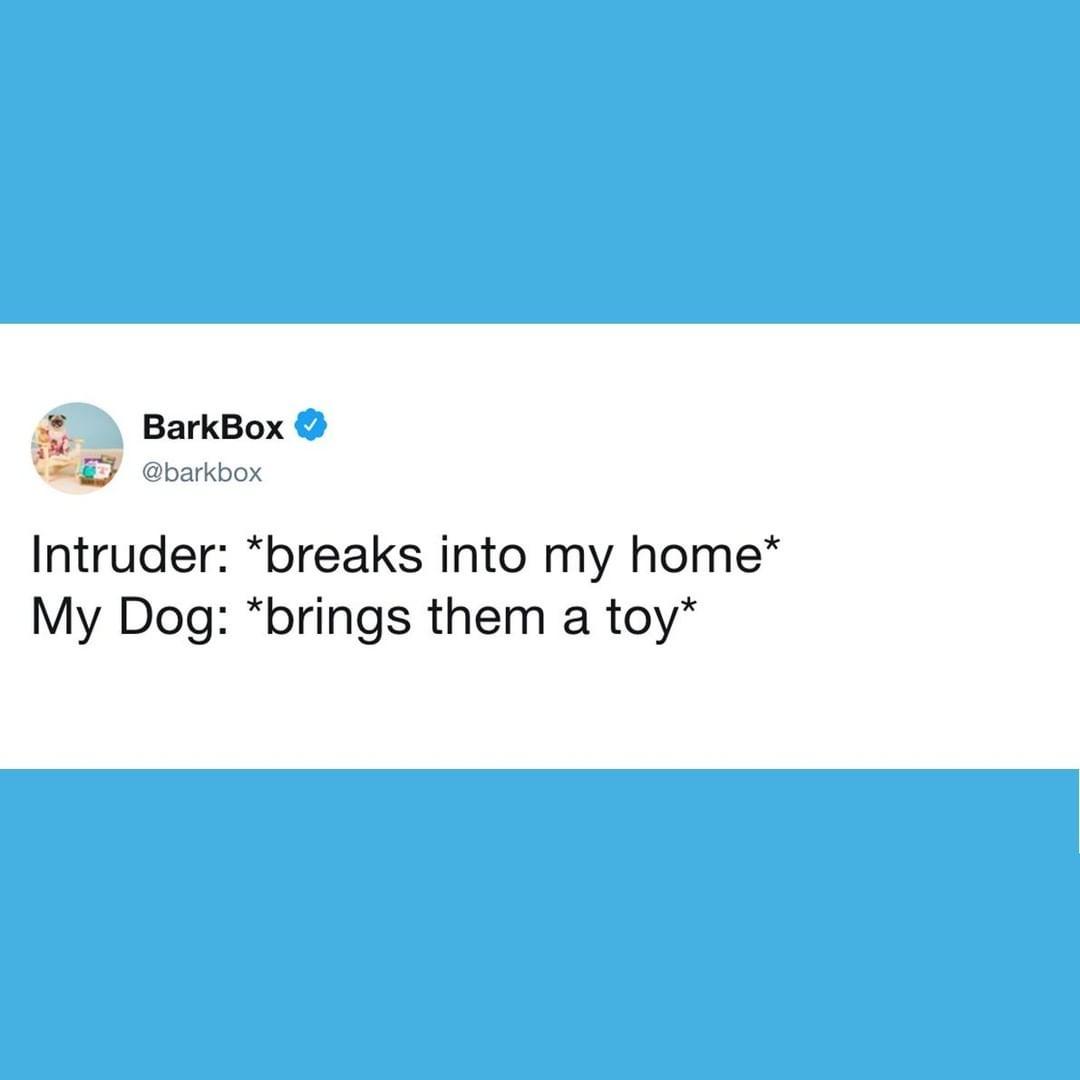
2. Photos of people (you, your employees, your customers or your influencer friends) using your products are ideal fodder for Instagram feeds.
Like this shot from @REI.
Post Templates For Facebook
1. Customer testimonials combined with a benefit plus a call-to-action are all you need.
Just don’t use them for every post – maybe 10-15% of your posts should use this formula.

2. Show people how to use your products.
About 20-50% of your Facebook posts can be directly promotional. Check out pages like ModCloth if you sell clothes, or Chewy if you sell hobby supplies. If you offer sales and specials, make those another 10-15% of your posts.
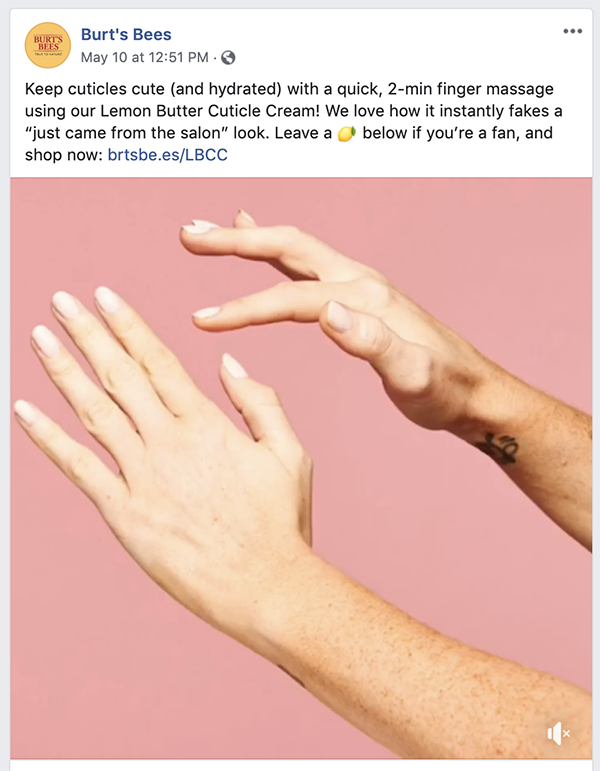
3. Show what it’s like to work at your company.
20% of the posts you share can be “a day in the life” posts of your employees. Don’t be shy about announcing any job openings, either.
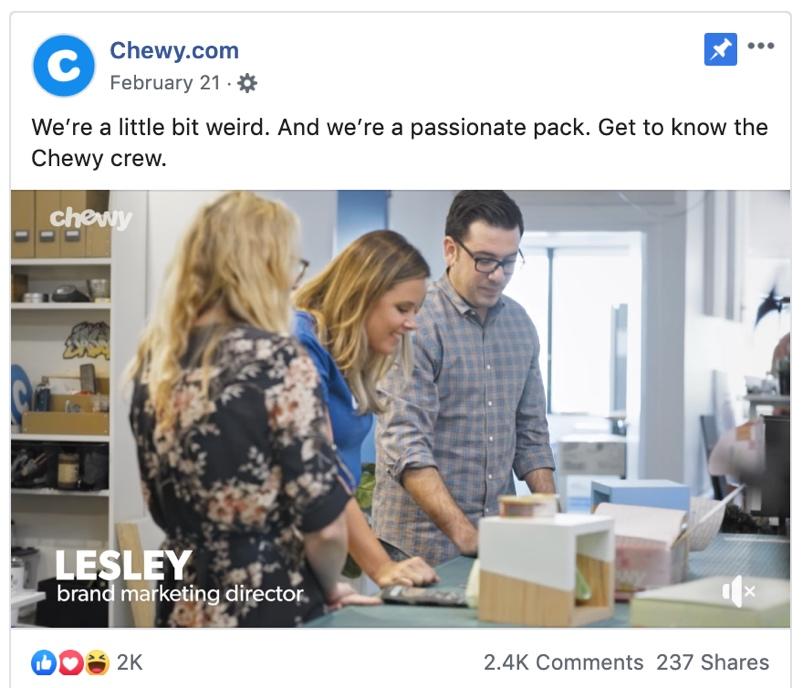
4. Share third-party content (like articles, gifs, calls for support, inspirational statements, and more) to round out the rest of your posts. Extra credit if you incorporate a quiz or a poll once in a while, too.
Tweet templates for Twitter
You can apply all the copywriting formulas and content suggestions we’ve mentioned for Instagram and Facebook to Twitter, too. (Or LinkedIn, you B2Bers.) But here are a couple more social media post formulas that will work on Twitter as well.
1. “Check out” + [Feature] + “on the” + product.
As in: “Check out the USB, USB-C, and AC Outlet charging ports on the 124,800 mAh Portable Power Station.”
Here’s how the remote meetings provider BlueJeans has used this formula:
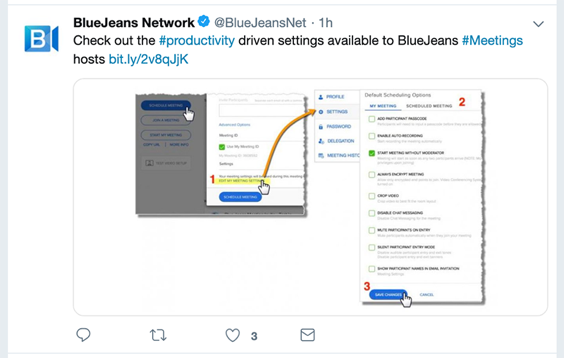
2. [Question] + “Find out in” + [Your New Blog Post Title or a Third-Party Blog Post or Video].
Of course, your social media feeds should be promoting the content you create, too. So anytime you’ve got a new blog post, or a new video, or a new interview, webinar, infographic or whatever – queue it up and post it.
Extra credit: Repost your “old” content weeks and months after it’s been published. You’ll get more website traffic and probably more sales.
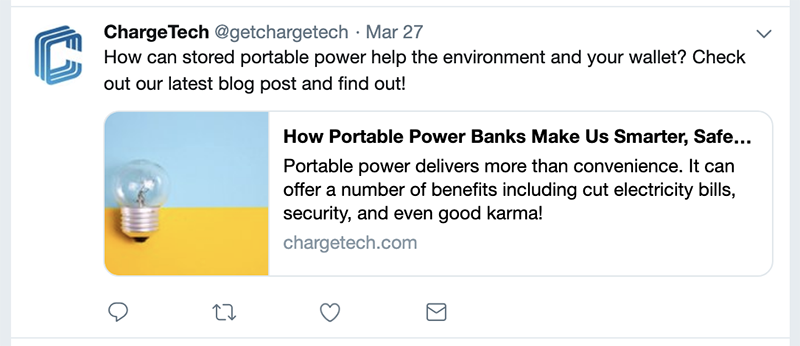
Key Takeaways
You don’t ever have to write from scratch again. In fact, we actually don’t recommend you try. Use any of the ecommerce copywriting formulas we’ve mentioned here. And don’t hesitate to bend them, vary them, blend them.
Of course… you could probably come up with your own ecommerce copywriting formulas, too. Now that you’ve seen how to break down a piece of ecommerce copy into its most basic elements…
- Product name
- Target audience
- Features
- Benefits
- Call to action
You could potentially go to any ecommerce website and just start lifting copywriting formulas from your competitors’ best sellers.
Let us know how it works out if you try that. And if you’ve got any other ideas about ecommerce copywriting formulas, let us know about those, too. The comments section is open.







These are all great copywriting formulas, formula #5 is my favorite!